Route 1. Map of the Inca Trail to Machu Picchu
The Inca Trail starts in Cusco. Then you travel to kilometer 82 of the route by train. There begins the trek for 4 days until arriving at Machu Picchu through the Intipunku. Along the way, other Inca archaeological sites can be seen.
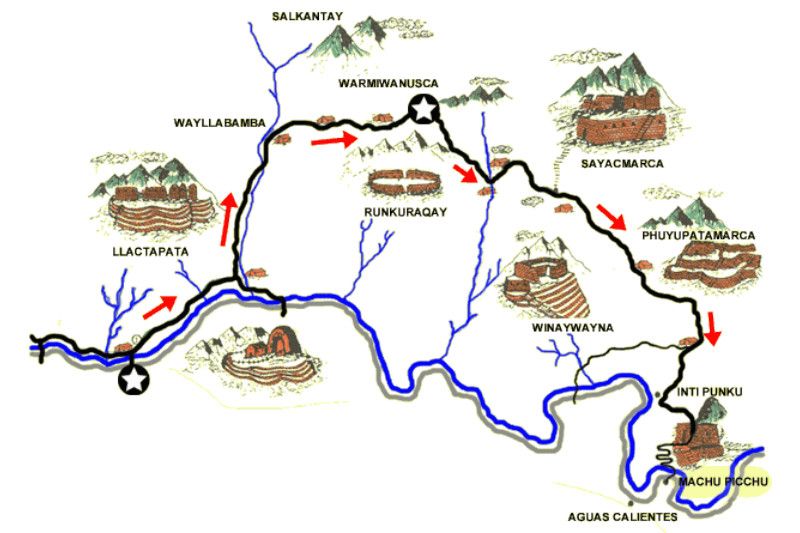
Route 2. Map of the train trip to Machu Picchu
There are several train stations, although most tourists choose the Ollantaytambo station. To follow this route, take a bus from the city of Cusco. The train trip lasts 1 hour 45 minutes and ends in Aguas Calientes, at the foot of Machu Picchu.
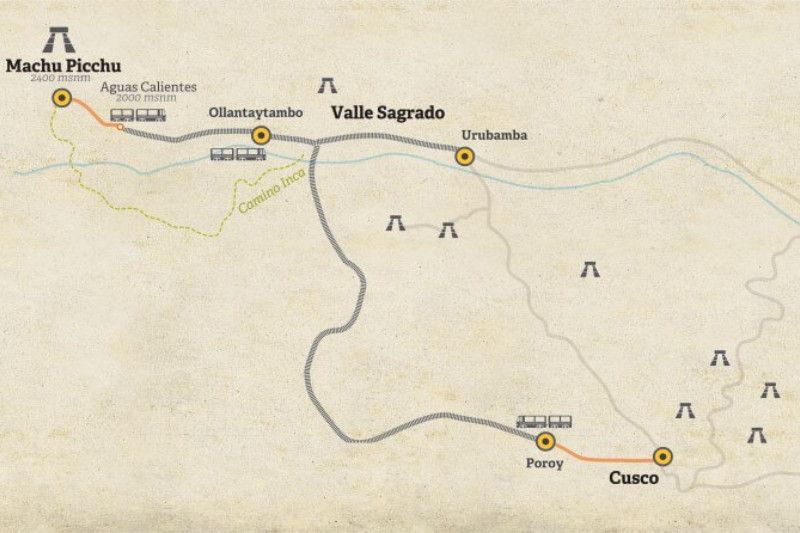
Route 3. Map of the alternative route through Hidroelectrica
The route begins in the city of Cusco where a bus is boarded to the town of Santa María (5 hour trip). There you take a collective taxi to the town of Santa Teresa or the Hydroelectric station (2 hours). Finally, you walk (or take the train) to the town of Aguas Calientes, at the foot of Machu Picchu.

How to go to Machu Picchu on your own?
You can choose the route you prefer to get to Machu Picchu on your own. However, none will be helpful if you do not buy the Machu Picchu tickets in advance. Then you must choose the route of your choice: the Inca Trail, the train journey through Ollantaytambo, or the alternative route by Hydroelectric. If you chose the Inca Trail, you must book the tour through the website of a tourism agency 5 or 6 months in advance. If you chose the route by train, you must buy the tickets to Machu Picchu as well as the train tickets 3 or 4 weeks in advance. If you chose the alternative route by Hydroelectric, you should only buy tickets to Machu Picchu in advance.
The Inca Trail
For outdoor enthusiasts visiting Machu Picchu, the best way to get there is by taking the classic Inca Trail. This hike is considered one of the top 5 most impressive hiking trails in the world. Built by the Incas centuries ago to connect Machu Picchu with Cusco, it offers a blend of extraordinary archaeological sites and breathtaking Andes Mountains landscapes merging with the edge of the Amazon rainforest. Along the trail, hikers can explore not only Machu Picchu but also the citadels of Runkurakay, Phuyupatamarca, Sayacmarca, and more. The Inca Trail spans 4 days and 3 nights, covering a distance of approximately 39 kilometers. The highest point during the hike reaches 4,200 meters above sea level (13,779 ft). After passing through various Inca sites, travelers will reach the ancient entrance gate to Machu Picchu, known as Intipunku. Due to limited availability, permits for hiking the Inca Trail must be secured several months in advance through a tourism agency’s website.
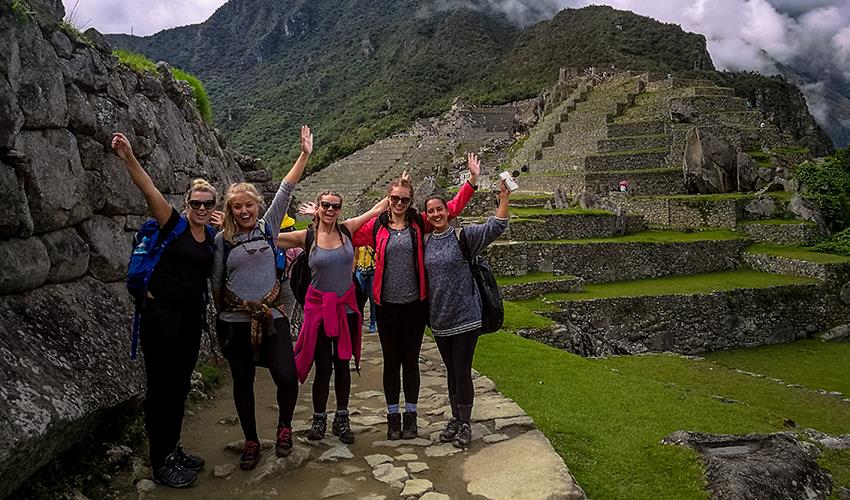
The train journey through Ollantaytambo
Tourists seeking a comfortable and safe journey should opt for the train ride from Cusco (or one of its train stations) to the final station of Machu Picchu. Most visitors prefer to travel by train from Ollantaytambo station, situated in the Sacred Valley of the Incas. The train route is renowned as one of the most breathtaking short train trips globally. It covers just over 30 kilometers in a journey lasting approximately 1 hour and 45 minutes. Throughout the trip, passengers can enjoy the stunning landscapes of the Vilcanota River, the Cusco mountain range, and the traditional Andean villages along the route. Upon reaching the Aguas Calientes train station, travelers must board one of the buses that ascend 10 kilometers to reach the entrance gate of the Machu Picchu archaeological site. This final leg of the journey only takes 30 minutes. Train tickets can be purchased online via the websites of Peru Rail or Inca Rail, the only two companies operating the train service to Machu Picchu.
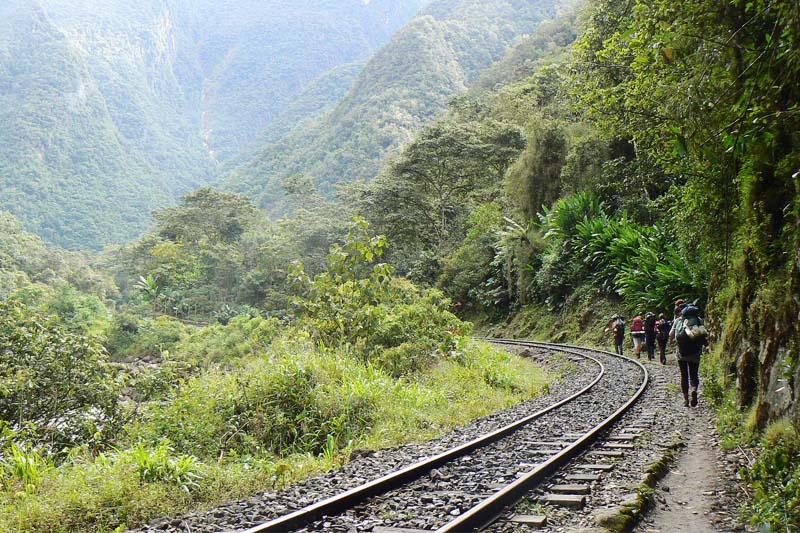
The alternative route by Hydroelectric
Tourists looking for a more affordable trip to Machu Picchu can choose the alternative route via Hydroelectric. This journey also includes a short walk through landscapes rich in vegetation. The route commences in the city of Cusco and leads to the town of Santa María (approximately 5 hours). Upon arrival, a shared vehicle must be taken to Santa Teresa or directly to the Hydroelectric station (a journey of around 2 hours). From the Hydroelectric station, you can walk to Aguas Calientes (approximately 2 hours), although it is also possible to take a train that reaches the destination in just 20 minutes. Despite the length of the journey (almost 8 hours in total), it remains the most economical means of reaching Machu Picchu. Once in Aguas Calientes, it is advisable to spend the night at accommodation and visit Machu Picchu the following day. No online ticket purchase is required for the Hydroelectric alternative route. Buses to Santa María depart from Antonio Lorena Avenue in Cusco. It is not recommended to embark on this alternative route during the rainy season (from January to April) due to possible landslides caused by heavy rains. 3 ways to reach Machu Picchu The Santa María alternative route proves to be a pleasant and cost-effective means of reaching Machu Picchu.

Recommendations to go to Machu Picchu on your own
If your ticket includes Machu Picchu or Huayna Picchu mountains, you must take the train very early. Another option is to spend the night in Aguas Calientes and visit the mountains early the next day. The high season in Machu Picchu (May – September) demands that tickets must be purchased in advance. Especially the ticket that includes Huayna Picchu mountain (3 or 4 months in advance). Train tickets must also be purchased online with an advance time of 2 to 3 weeks. Entrance fees to Machu Picchu have discounts for university students, children under 18, and citizens of Peru, Colombia, Bolivia, and Ecuador.
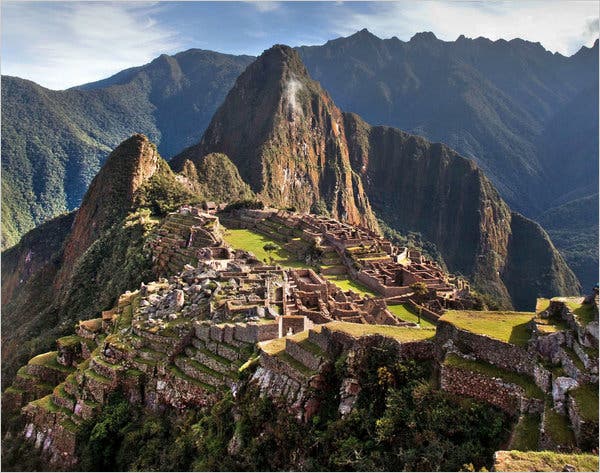
See more pictures

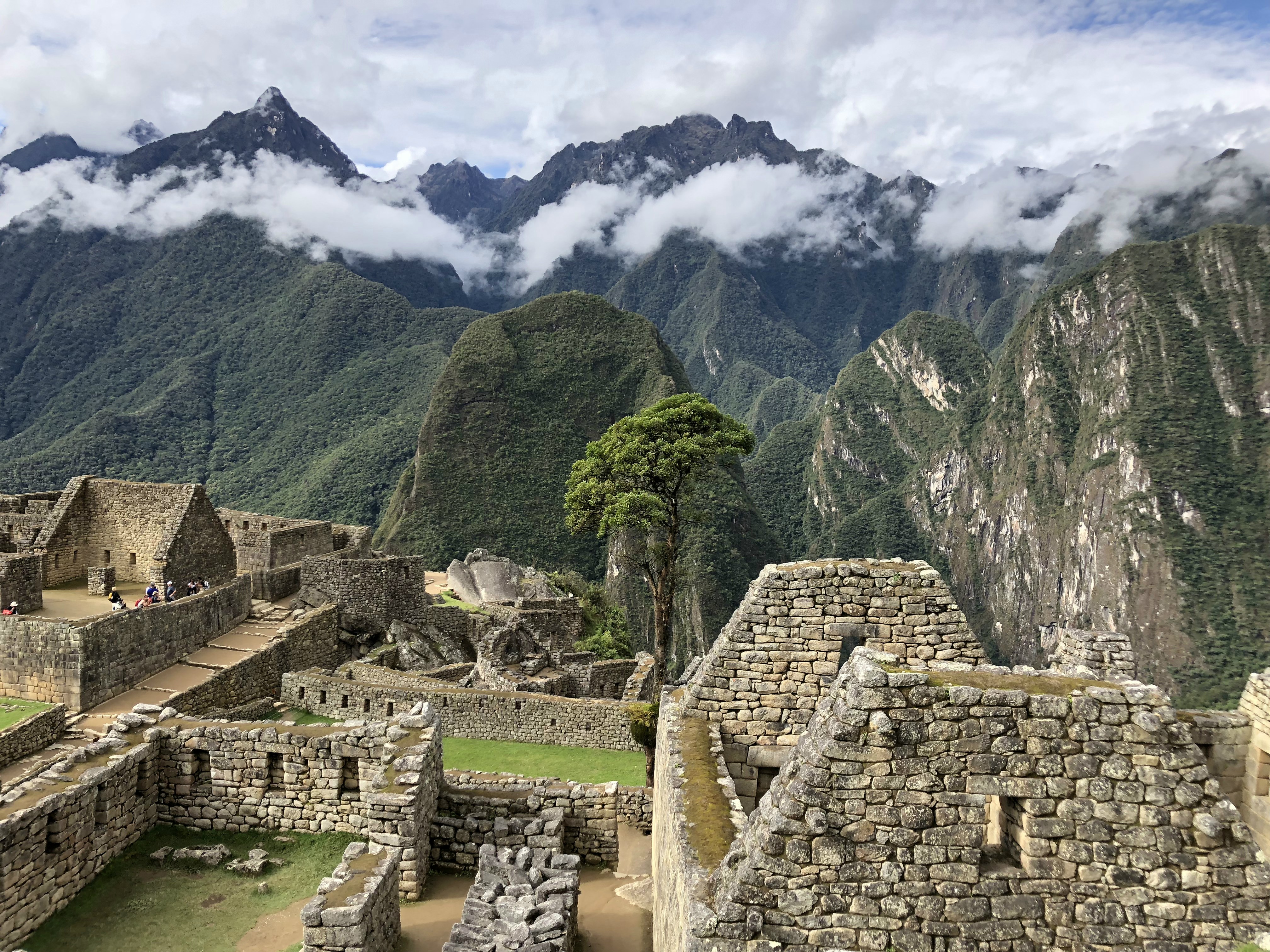
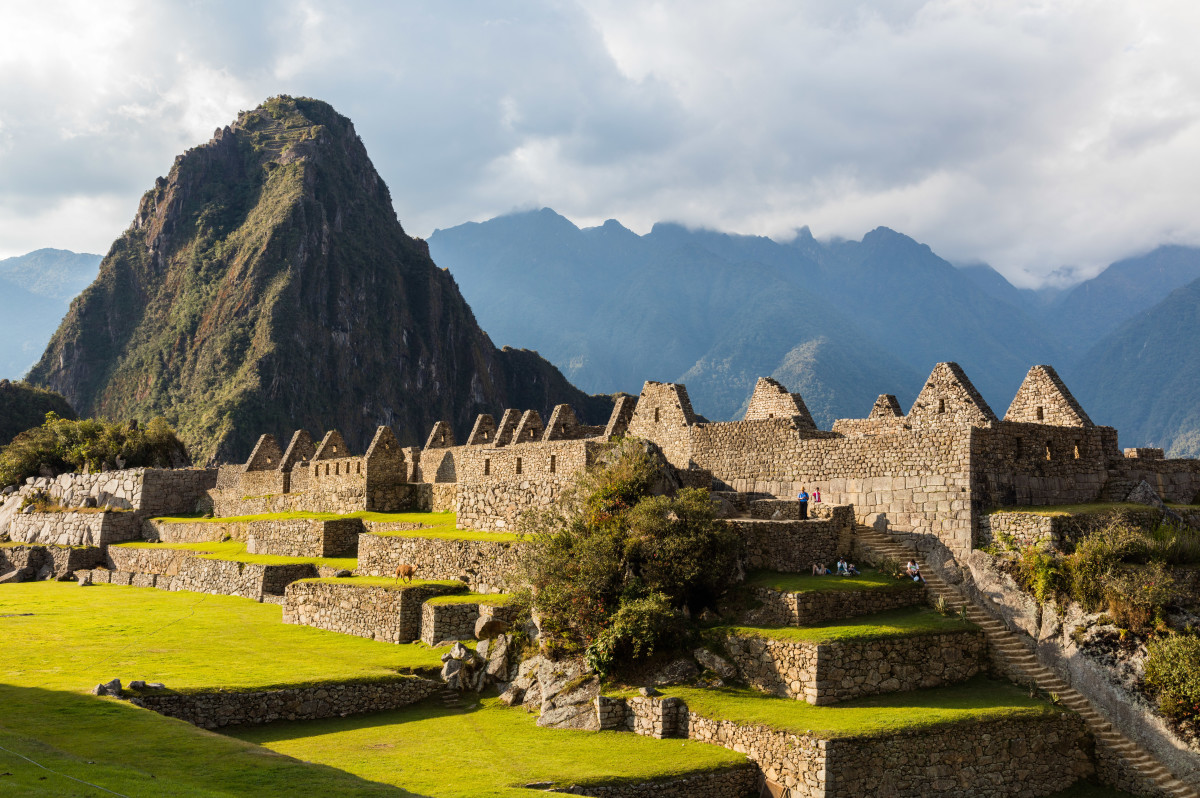
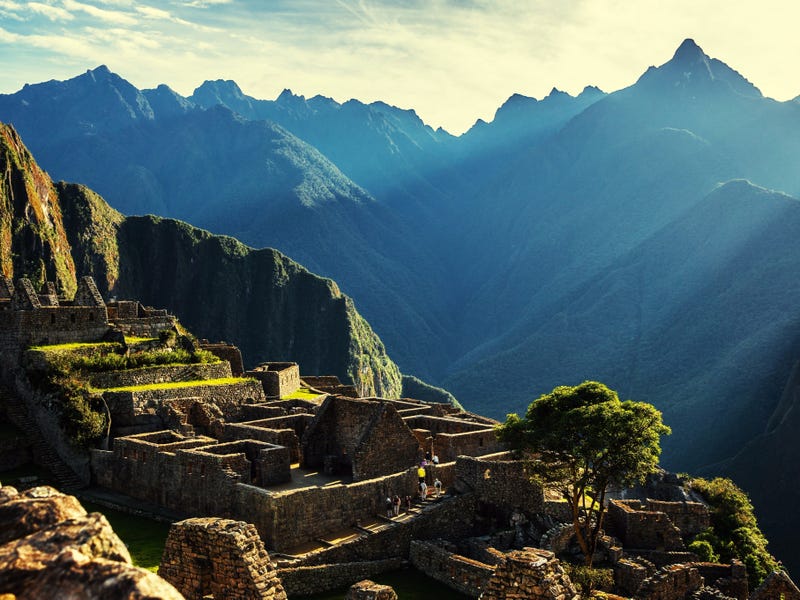
Questions and answers about the route to Machu Picchu on your own
1) Is going on my own cheaper than going on a tour to Machu Picchu?
Yes. Going on your own allows you to choose an economic trip or one with all the luxury. If you choose the first option, the cost is cheaper compared to the trip with a tour.
2) Yes or yes, should I buy my tickets to Machu Picchu in advance?
Tickets to Machu Picchu must be purchased 1, 2 or 3 weeks in advance. The ticket that yes or yes you must buy 3 or 4 months in advance is the ticket ‘Machupicchu with Huaynapicchu’.
3) Can I do the Inca Trail without a tour?
No, the Inca Trail to Machu Picchu can only be done with a tour organized by a Cusco tourism agency.
4) Can I do the Salkantay trek without a tour?
Yes, this route can be done with a tour or on your own. For this last option it is necessary to organize the necessary utensils and food products.
5) Is the route to Machu Picchu by Hydroelectric dangerous?
No, the route is safe. However, it is recommended not to do it in the months of intense rains: January, February and March. The rest of the year the route is very safe.
6) What should I take to the route to Machu Picchu by Hydroelectric?
During this route, it is recommended to wear sports clothing with long sleeves and pants, mosquito repellent, sunscreen, a hat, water, snacks, a poncho in case of rain, and more.
7) Can I walk from Ollantaytambo to Machu Picchu?
No, this route is very long and the best way to complete it is by train. The way to get there on foot is along the Hydroelectric route.
8) Can I walk from Aguas Calientes to Machu Picchu?
Yes, this 10 kilometer route is free for all. However, due to the fatigue it causes, it is best to take the bus to Machu Picchu.
9) Can I get a tour guide in Machu Picchu on my own?
Yes, at the door of Machu Picchu you can get tour guides for the trip on your own. The price varies from 10 soles per person in shared service.
10) Where to have a cheap lunch in Machu Picchu?
On the trip to Machu Picchu you can have lunch in the town of Aguas Calientes. In the local food market you can get lunch from 8 Peruvian soles.
